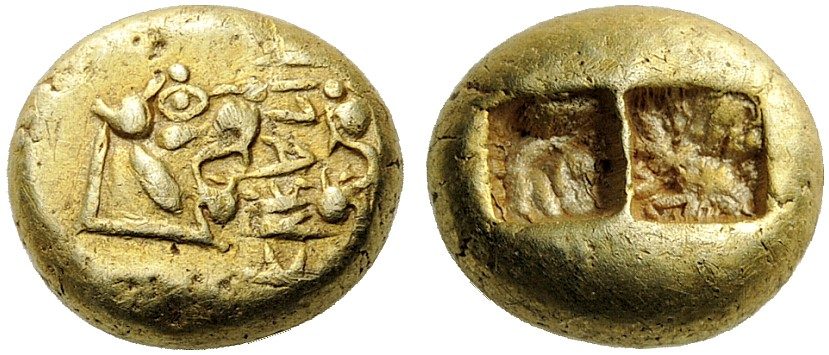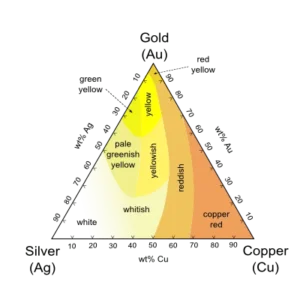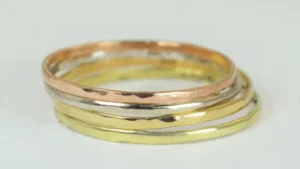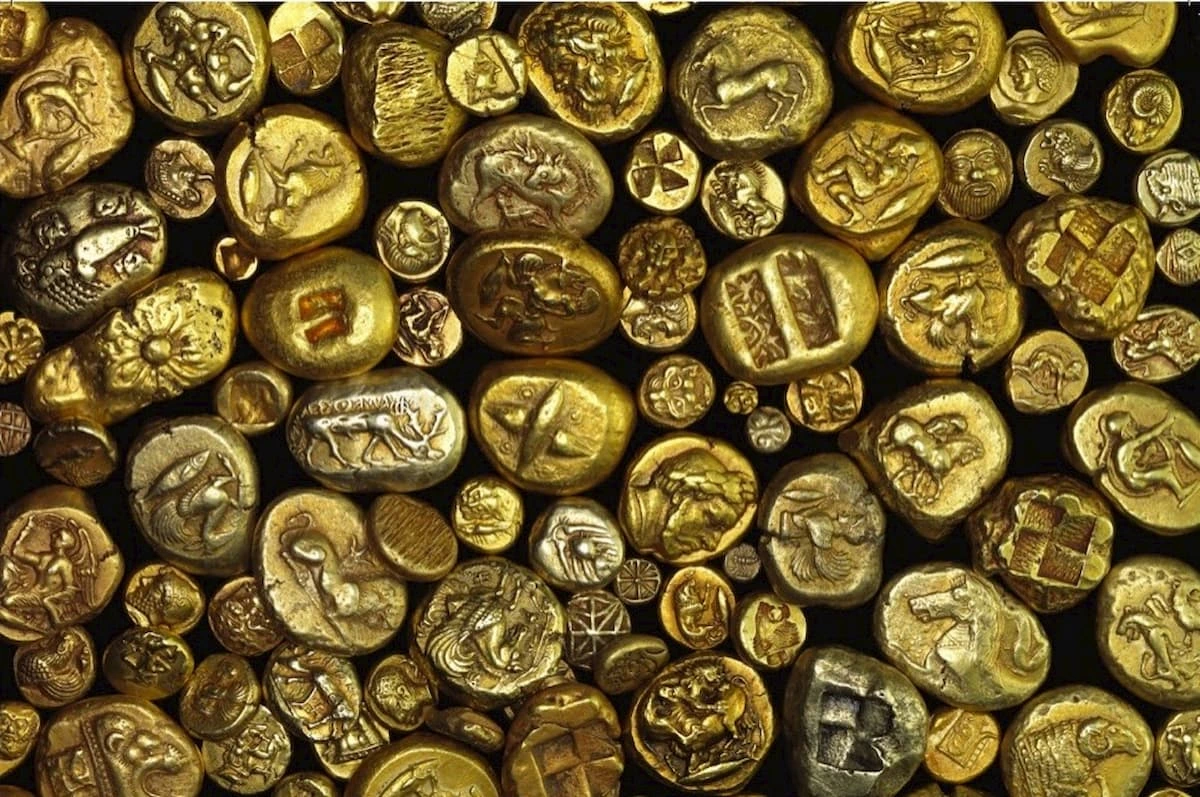You’re likely familiar with yellow gold, white gold and rose gold – but have you ever heard of green gold?
Green gold, aka electrum, is a combination of two precious elements: silver and gold. Historians agree that electrum was first discovered in riverbeds and used by ancient civilizations to make drinking vessels, coat pyramids, and even mint the world’s first coins.
Green gold is still used today to make jewelry, and – fun fact – the medal for a Nobel prize in chemistry is made of gold plated electrum! Read on to learn more about this unique precious metal alloy.
What is Green Gold Electrum?
Electrum is a naturally-occurring alloy consisting of mostly gold and silver, often with small amounts of other metals like copper, iron, bismuth, and palladium. The ratio of gold to silver in natural electrum varies depending on where it was formed.
Precious metals like silver and gold often occur together in nature because they share similar chemical properties and are commonly transported and deposited by the same hydrothermal fluids. Gold, silver and electrum are often found in epithermal and vein-type deposits.

Ancient Uses of Electrum
Electrum was used to create the first gold coins in the 7th century BCE, which were traded in the ancient Kingdom of Lydia (modern-day Turkey).
Unlike today’s perfectly-round bullion coins, ancient coins were more like irregular blobs of metal – roughly round, but far from uniform. They were stamped based on weight, but since natural electrum varies in its gold-to-silver ratio, it was difficult to know each coin’s exact value. We’ve come a long way since then!
In addition to coins, electrum was used for jewelry, statues, thrones, drinking vessels, dinnerware and even coatings on pyramids. The metal was valued for its beauty, malleability and durability. Gold and silver are naturally soft metals, making them relatively easy to work with. They’re also quite stable and resistant to tarnishing.
Natural Vs Man-Made Electrum
While true electrum occurs in nature, it can also be recreated by combining gold and silver (roughly 80-90% gold, 10-20% silver). This synthesized version is typically referred to as green gold.
Natural electrum varies in color, ranging from pale gold to bright gold, depending on the multi-metal composition. Man-made green gold looks pretty similar to traditional yellow gold, but with a subtle green tint.

Is Green Gold Used for Jewelry?
While it’s rare for modern-day jewelers to use natural electrum, they certainly still use green gold. Back in the day, jewelers would add cadmium to the gold-silver mix to create a vibrant green hue. Adding 2% cadmium creates a light green, while 4% cadmium yields a deeper green.
Cadmium creates the richest shades of green in gold alloys, but there’s a catch: it’s toxic. Exposure to this heavy metal poses health risks to both metalsmiths and those who wear the jewelry. Because of this, regulations on cadmium use – especially in children’s jewelry – were ramped up in the early 2010s. It’s pretty rare these days.
Instead, most jewelers use non-toxic green gold recipes, often consisting of silver, gold, copper and zinc. The green tint is subtle – green gold looks very similar to standard yellow gold at first glance. However, when placed side-by-side, the difference becomes much more noticeable. That’s why green gold is often featured in mixed-metal designs, where contrasting shades of gold pop against one another. Green gold also pairs nicely with green and blue-colored gemstones.
How to Spot Fake Green Gold
From a metallurgical standpoint, authentic green gold can only ever get so green. So, if you ever see a piece of “green gold” jewelry with a super-vibrant green color, it’s probably not real gold. It could be oxidized copper or anodized titanium – both of which look cool, but aren’t worth breaking the bank for.

Can Green Gold Be Refined?
Green gold, like any authentic gold alloy, can be sold to a precious metals refinery like Garfield Refining for recycling. Outdated, broken or unwanted green gold jewelry may still carry significant value, especially with today’s soaring gold prices.
Refining is not only a smart way to earn extra cash, but it also ensures that nothing goes to waste: your precious metals are melted down into bars and repurposed for future use!
Do you have gold jewelry that you’re looking to sell? Look no further than Garfield Refining, America’s trusted precious metals expert since 1892.
Get the most for your precious metal scrap in just a few simple steps. Start today by downloading a free shipping label!

